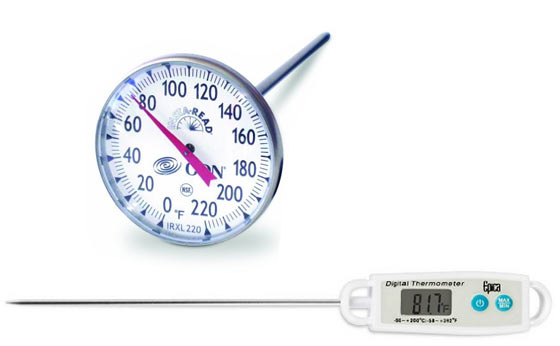Safe Temperature For Cooking Meat

Safe cooking is essential in preventing foodborne illness. You can’t see, smell, or taste harmful bacteria that may cause illness, so cook all meat to these minimum internal temperatures to destroy germs and pathogens as measured with a food thermometer before removing food from the heat source:
What temperature is meat safe to eat:
All temperatures in degrees Fahrenheit.
GROUND: Beef, Pork, Veal, Lamb (160)
GROUND: Turkey, Chicken (165)
BEEF: Steaks, Roasts, Chops (145)
CHICKEN: Whole, Breast, Wings, Thighs, Legs (165)
TURKEY: Whole, Breast, Wings, Thighs, Legs (165)
DUCK & GOOSE (165)
PORK and HAM (145)
VEAL and LAMB (145)
GAME ANIMALS: Venison, Elk, Bison (160)
LEFTOVERS and CASSEROLES (165)
SEAFOOD: Fish, Shellfish (145)
Don’t rely upon color or texture alone to tell if the meat is safe to eat.
Using a food thermometer is the only way to determine if foods are fully cooked.
How To Use A Food Thermometer
When you think your food is cooked, place the food thermometer in the thickest part of the food, making sure the tip does not touch bone, fat, or gristle.
Wait the amount of time required for your type of thermometer to stabilize a steady reading.
Clean your thermometer after each use with hot soapy water.
There are two predominant types of food thermometers that people use – a digital thermometer and a dial thermometer. The digital works very quickly while a dial takes a moment longer to provide an accurate reading. The digital requires a battery (ordinarily no problem) while the dial thermometer is stand-alone (no worries about a dead battery – good for SHTF).
Best rated food thermometers include:
Digital Pocket Thermometer
DIAL: ‘CDN’ ProAccurate Insta-Read Large Dial Cooking Thermometer
I prefer both types, because one cannot depend upon electricity or batteries all of the time…
Sources:
US Department of Agriculture
